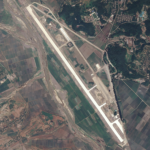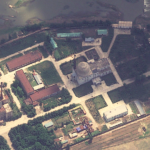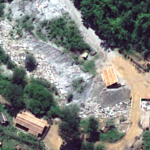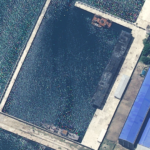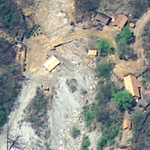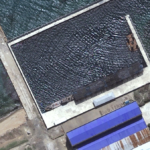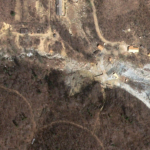July 14, 2022, by Joseph S. Bermudez Jr., Victor Cha and Jennifer Jun—
Recent satellite imagery shows North Korea is making slow but steady progress with its renovation and expansion of the North Korean Air and Air Defense Force's Sunchon Airbase... Recently acquired satellite imagery shows North Korea is making slow but steady progress with its…
July 11, 2022, by Joseph S. Bermudez Jr., Victor Cha and Jennifer Jun—
A high-resolution satellite image from July 3, 2022, shows the current observable status of the Yongbyon Nuclear Research Center, where flooding of the nearby Kuryong River and new activity is observed near Building 500—the first such activity since 2016.
June 29, 2022, by Joseph S. Bermudez Jr., Victor Cha and Jennifer Jun—
Recent satellite image clearly details the current observable status of the Punggye-ri Nuclear Test Facility, where North Korea is assessed to have finished all preparations for conducting a nuclear test... A high-resolution satellite image acquired on June 24, 2022, clearly details the current observable status…
June 28, 2022, by Joseph S. Bermudez Jr., Victor Cha and Jennifer Jun—
Satellite image collected on June 16 of the Sinpo South Shipyard shows that the submersible missile test stand barge has once again exchanged positions with the infiltration mothership, and various pieces of equipment are visible on the apron of the nearby pop-up test stand.
June 15, 2022, by Joseph S. Bermudez Jr., Victor Cha and Jennifer Jun—
New satellite imagery of the Punggye-ri Nuclear Test Facility shows not only ongoing work at Tunnel No. 3, but also new indicators of construction activity at Tunnel No. 4 further north. .. This post was updated on June 27, 2021, to take into account additional imagery analysis…
June 9, 2022, by Joseph S. Bermudez Jr., Victor Cha and Jennifer Jun—
Satellite imagery collected from the last several months show intermittent activity on North Korea’s second submersible missile test stand barge located in Nampo Navy Shipyard on the west coast. .. Satellite imagery collected from the last several months show intermittent activity on North Korea’s second…
June 1, 2022, by Joseph S. Bermudez Jr., Victor Cha and Jennifer Jun—
Recent satellite imagery provides the first views of the secure boat basin at Sinpo South Shipyard since the SLBM test launch on May 7. The images show the submersible missile test stand barge has exchanged positions with the infiltration mothership once again.
May 17, 2022, by Joseph S. Bermudez Jr., Victor Cha and Jennifer Jun—
A high off-nadir satellite imagery collected on May 17, 2022, provides a unique view of the ongoing activity outside the new portal to Tunnel No. 3 (South Portal) and in the main administration and support area of the Punggye-ri Nuclear Test Site... A high off-nadir satellite imagery collected on May 17, 2022, provides a unique and current…
May 2, 2022, by Joseph S. Bermudez Jr., Victor Cha and Jennifer Jun—
Satellite image collected on April 20 provides one of the most detailed and current views of the Sinpo Shipyard, which houses North Korea's experimental ballistic missile submarine and submersible test stand barge... Satellite image collected on April 20, 2022, provides one of the most detailed and current…
April 28, 2022, by Joseph S. Bermudez Jr., Victor Cha and Jennifer Jun—
Recent satellite image shows indications of ongoing construction work near and inside Tunnel No. 3 at the Punggye-ri Nuclear Testing Site... Satellite image collected on April 25, 2022, provides one of the most detailed and current views of continued activity at the Punggye-ri Nuclear Test Facility....
